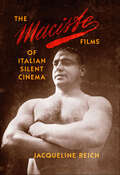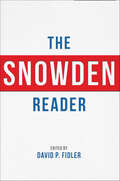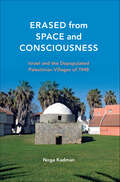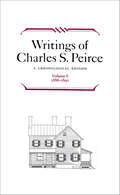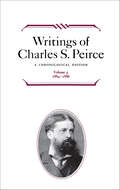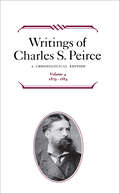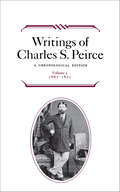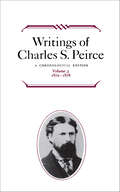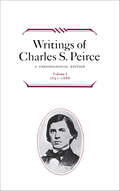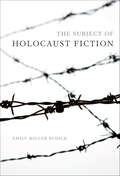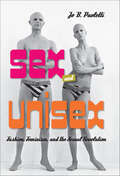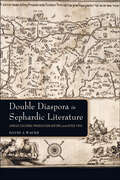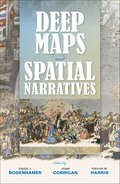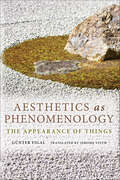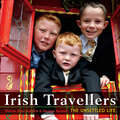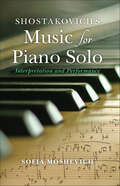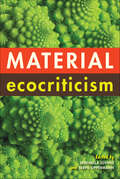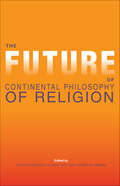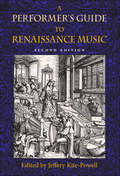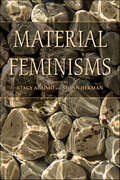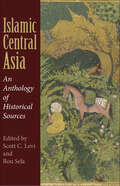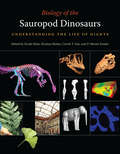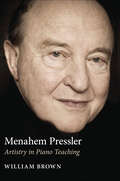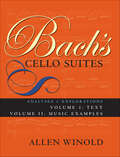- Table View
- List View
The Maciste Films of Italian Silent Cinema
by Jacqueline ReichItalian film star Bartolomeo Pagano's "Maciste" played a key role in his nation's narratives of identity during World War I and after. Jacqueline Reich traces the racial, class, and national transformations undergone by this Italian strongman from African slave in Cabiria (1914), his first film, to bourgeois gentleman, to Alpine soldier of the Great War, to colonial officer in Italy's African adventures. Reich reveals Maciste as a figure who both reflected classical ideals of masculine beauty and virility (later taken up by Mussolini and used for political purposes) and embodied the model Italian citizen. The 12 films at the center of the book, recently restored and newly accessible to a wider public, together with relevant extra-cinematic materials, provide a rich resource for understanding the spread of discourses on masculinity, and national and racial identities during a turbulent period in Italian history. The volume includes an illustrated appendix documenting the restoration and preservation of these cinematic treasures.
The Snowden Reader
by David P. FidlerWhen Edward Snowden began leaking NSA documents in June 2013, his actions sparked impassioned debates about electronic surveillance, national security, and privacy in the digital age. The Snowden Reader looks at Snowden's disclosures and their aftermath. Critical analyses by experts discuss the historical, political, legal, and ethical issues raised by the disclosures. Over forty key documents related to the case are included, with introductory notes explaining their significance: documents leaked by Snowden; responses from the NSA, the Obama administration, and Congress; statements by foreign leaders, their governments, and international organizations; judicial rulings; findings of review committees; and Snowden's own statements. This book provides a valuable introduction and overview for anyone who wants to go beyond the headlines to understand this historic episode.
Peasant Fires: The Drummer of Niklashausen
by Richard Wunderli" . . . lively and intellectually stimulating . . . " —Speculum"Wunderli . . . has lucidly reconstructed a controversial conflict in 15th-century south-central Germany. . . . this engaging narrative takes off from Hans Behem—the peasant who claimed to see the Virgin and gained followers until crushed by the established church—to explore larger forces at work in Germany on the eve of the Reformation. . . Wunderli also attempts to sort out the violent conflict that ensued and Hans's subsequent trial. His scrupulousness and sensitivity make for a small but valuable book." —Publishers Weekly"Fascinating and well written, this is highly recommended for academic and larger public libraries." —Library Journal"Richard Wunderli . . . deftly tells the story in Peasant Fires, finding in it a foreshadowing of peasant uprisings in the 16th century." —New York Times Book Review" . . . a stimulating read . . . an engaging synthesis." —Central European HistoryIn 1476, an illiterate German street musician had a vision of the Virgin Mary and began to preach a radical social message that attracted thousands of followers—and antagonized the church. The drummer was burned at the stake. This swiftly moving narrative of his rise and fall paints a vivid portrait of 15th-century German society as it raises important questions about the craft of history."A gem of a book. . . . It has a plot, good guys and bad buys, it opens up a 'strange' world, and it is exceptionally well written." —Thomas W. Robisheaux
Erased from Space and Consciousness: Israel and the Depopulated Palestinian Villages of 1948
by Noga KadmanHundreds of Palestinian villages were left empty across Israel when their residents became refugees after the 1948 war, their lands and property confiscated. Most of the villages were razed by the new State of Israel, but in dozens of others, communities of Jews were settled—many refugees in their own right. The state embarked on a systematic effort of renaming and remaking the landscape, and the Arab presence was all but erased from official maps and histories. Israelis are familiar with the ruins, terraces, and orchards that mark these sites today—almost half are located within tourist areas or national parks—but public descriptions rarely acknowledge that Arab communities existed there within living memory or describe how they came to be depopulated. Using official archives, kibbutz publications, and visits to the former village sites, Noga Kadman has reconstructed this history of erasure for all 418 depopulated villages.
Writings of Charles S. Peirce: A Chronological Edition (Writings of Charles S. Peirce)
by Charles S. PeirceVolume 6 of this landmark edition contains 66 writings mainly from the unsettled period in Peirce's life just after he moved from New York to Milford, Pennsylvania, followed shortly afterward by the death of his mother. The writings in this volume reveal Peirce's powerful mind probing into diverse issues, looking for an underlying unity, but, perhaps, also looking for direction.
Writings of Charles S. Peirce: A Chronological Edition (Writings of Charles S. Peirce)
by Charles S. Peirce"Highly recommended." —Choice" . . . an important event for the world of philosophy. For the first time we have available in an intelligible form the writings of one of the greatest philosophers of the past hundred years." —The Times Literary SupplementVolume 5 of this landmark edition covers an important transition in Peirce's life, marked by a rekindled enthusiasm for speculative philosophy. The writings include essays relating to his all-embracing theory of categories as well as papers on logic and mathematics.
Writings of Charles S. Peirce: A Chronological Edition (Writings of Charles S. Peirce)
by Charles S. Peirce"The volumes are handsomely produced and carefully edited, . . . For the first time we have available in an intelligible form the writings of one of the greatest philosophers of the past hundred years . . . " —The Times Literary Supplement" . . . an extremely handsome and impressive book; it is an equally impressive piece of scholarship and editing." —Man and World
Writings of Charles S. Peirce: A Chronological Edition (Writings of Charles S. Peirce)
by Charles S. Peirce"For anyone seriously interested in Peirce, or in nineteenth-century American philosophy, or in American intellectual history, or in philosophy in general, or in semiotics and its philosophical import, these volumes should be required reading." —Murray G. Murphey, Semiotica
Writings of Charles S. Peirce: A Chronological Edition (Writings of Charles S. Peirce)
by Charles S. PeirceThe PEIRCE EDITION contains large sections of previously unpublished material in addition to selected published works. Each volume includes a brief historical and biographical introduction, extensive editorial and textual notes, and a full chronological list of all of Peirce's writings, published and unpublished, during the period covered.
Writings of Charles S. Peirce: A Chronological Edition (Writings of Charles S. Peirce)
by Charles S. PeirceThe PEIRCE EDITION contains large sections of previously unpublished material in addition to selected published works. Each volume includes a brief historical and biographical introduction, extensive editorial and textual notes, and a full chronological list of all of Peirce's writings, published and unpublished, during the period covered.
The Subject of Holocaust Fiction (Jewish Literature And Culture Ser.)
by Emily Miller BudickFictional representations of horrific events run the risk of undercutting efforts to verify historical knowledge and may heighten our ability to respond intellectually and ethically to human experiences of devastation. In this captivating study of the epistemological, psychological, and ethical issues underlying Holocaust fiction, Emily Miller Budick examines the subjective experiences of fantasy, projection, and repression manifested in Holocaust fiction and in the reader's encounter with it. Considering works by Cynthia Ozick, Art Spiegelman, Aharon Appelfeld, Michael Chabon, and others, Budick investigates how the reading subject makes sense of these fictionalized presentations of memory and trauma, victims and victimizers.
Sex and Unisex: Fashion, Feminism, and the Sexual Revolution
by Jo B. PaolettiNotorious as much for its fashion as for its music, the 1960s and 1970s produced provocative fashion trends that reflected the rising wave of gender politics and the sexual revolution. In an era when gender stereotypes were questioned and dismantled, and when the feminist and gay rights movements were gaining momentum and a voice, the fashion industry responded in kind. Designers from Paris to Hollywood imagined a future of equality and androgyny. The unisex movement affected all ages, with adult fashions trickling down to school-aged children and clothing for infants. Between 1965 and 1975, girls and women began wearing pants to school; boys enjoyed a brief "peacock revolution," sporting bold colors and patterns; and legal battles were fought over hair style and length. However, with the advent of Diane Von Furstenberg's wrap dress and the launch of Victoria's Secret, by the mid-1980s, unisex styles were nearly completely abandoned. Jo B. Paoletti traces the trajectory of unisex fashion against the backdrop of the popular issues of the day—from contraception access to girls' participation in sports. Combing mass-market catalogs, newspaper and magazine articles, cartoons, and trade publications for signs of the fashion debates, Paoletti provides a multigenerational study of the "white space" between (or beyond) masculine and feminine.
Double Diaspora in Sephardic Literature: Jewish Cultural Production Before and After 1492 (Sephardi and Mizrahi Studies)
by David A. WacksThe year 1492 has long divided the study of Sephardic culture into two distinct periods, before and after the expulsion of Jews from Spain. David A. Wacks examines the works of Sephardic writers from the 13th to the 16th centuries and shows that this literature was shaped by two interwoven experiences of diaspora: first from the Biblical homeland Zion and later from the ancestral hostland, Sefarad. Jewish in Spain and Spanish abroad, these writers negotiated Jewish, Spanish, and diasporic idioms to produce a uniquely Sephardic perspective. Wacks brings Diaspora Studies into dialogue with medieval and early modern Sephardic literature for the first time.
Deep Maps and Spatial Narratives (The Spatial Humanities)
by John Corrigan David J. Bodenhamer Trevor M. HarrisDeep maps are finely detailed, multimedia depictions of a place and the people, buildings, objects, flora, and fauna that exist within it and which are inseparable from the activities of everyday life. These depictions may encompass the beliefs, desires, hopes, and fears of residents and help show what ties one place to another. A deep map is a way to engage evidence within its spatio-temporal context and to provide a platform for a spatially-embedded argument. The essays in this book investigate deep mapping and the spatial narratives that stem from it. The authors come from a variety of disciplines: history, religious studies, geography and geographic information science, and computer science. Each applies the concepts of space, time, and place to problems central to an understanding of society and culture, employing deep maps to reveal the confluence of actions and evidence and to trace paths of intellectual exploration by making use of a new creative space that is visual, structurally open, multi-media, and multi-layered.
Aesthetics as Phenomenology: The Appearance of Things (Studies in Continental Thought)
by Günter FigalConnecting aesthetic experience with our experience of nature or with other cultural artifacts, Aesthetics as Phenomenology focuses on what art means for cognition, recognition, and affect—how art changes our everyday disposition or behavior. Günter Figal engages in a penetrating analysis of the moment at which, in our contemplation of a work of art, reaction and thought confront each other. For those trained in the visual arts and for more casual viewers, Figal unmasks art as a decentering experience that opens further possibilities for understanding our lives and our world.
Irish Travellers: The Unsettled Life
by George Gmelch Sharon Bohn GmelchAnthropologists George and Sharon Gmelch have been studying the quasi-nomadic people known as Travellers since their fieldwork in the early 1970s, when they lived among Travellers and went on the road in their own horse-drawn wagon. In 2011 they returned to seek out families they had known decades before—shadowed by a film crew and taking with them hundreds of old photographs showing the Travellers' former way of life. Many of these images are included in this book, alongside more recent photos and compelling personal narratives that reveal how Traveller lives have changed now that they have left nomadism behind.
Shostakovich's Music for Piano Solo: Interpretation and Performance (Russian Music Studies)
by Sofia MoshevichThe piano works of Dmitri Shostakovich (1906–1975) are among the most treasured musical compositions of the 20th century. In this volume, pianist and Russian music scholar Sofia Moshevich provides detailed interpretive analyses of the ten major piano solo works by Shostakovich, carefully noting important stylistic details and specific ways to overcome the numerous musical and technical challenges presented by the music. Each piece is introduced with a brief historic and structural description, followed by an examination of such interpretive aspects as tempo, phrasing, dynamics, voice balance, pedaling, and fingering. This book will be an invaluable resource for students, pedagogues, and performers of Shostakovich's piano solos.
Material Ecocriticism
by Serenella Iovino Serpil OppermannMaterial Ecocriticism offers new ways to analyze language and reality, human and nonhuman life, mind and matter, without falling into well-worn paths of thinking. Bringing ecocriticism closer to the material turn, the contributions to this landmark volume focus on material forces and substances, the agency of things, processes, narratives and stories, and making meaning out of the world. This broad-ranging reflection on contemporary human experience and expression provokes new understandings of the planet to which we are intimately connected.
The Future of Continental Philosophy of Religion (Philosophy Of Religion Ser.)
by Clayton CrockettWhat is the future of Continental philosophy of religion? These forward-looking essays address the new thinkers and movements that have gained prominence since the generation of Derrida, Deleuze, Foucault, and Levinas and how they will reshape Continental philosophy of religion in the years to come. They look at the ways concepts such as liberation, sovereignty, and post-colonialism have engaged this new generation with political theology and the new pathways of thought that have opened in the wake of speculative realism and recent findings in neuroscience and evolutionary psychology. Readers will discover new directions in this challenging and important area of philosophical inquiry.
A Performer's Guide to Renaissance Music (Publications of the Early Music Institute)
by Jeffery Kite-PowellRevised and expanded since it first appeared in 1991, the guide features two new chapters on ornamentation and rehearsal techniques, as well as updated reference materials, internet resources, and other new material made available only in the last decade.The guide is comprised of focused chapters on performance practice issues such as vocal and choral music; various types of ensembles; profiles of specific instruments; instrumentation; performance practice issues; theory; dance; regional profiles of Renaissance music; and guidelines for directors. The format addresses the widest possible audience for early music, including amateur and professional performers, musicologists, theorists, and educators.
Material Feminisms
by Stacy Alaimo & Susan HekmanHarnessing the energy of provocative theories generated by recent understandings of the human body, the natural world, and the material world, Material Feminisms presents an entirely new way for feminists to conceive of the question of materiality. In lively and timely essays, an international group of feminist thinkers challenges the assumptions and norms that have previously defined studies about the body. These wide-ranging essays grapple with topics such as the material reality of race, the significance of sexual difference, the impact of disability experience, and the complex interaction between nature and culture in traumatic events such as Hurricane Katrina. By insisting on the importance of materiality, this volume breaks new ground in philosophy, feminist theory, cultural studies, science studies, and other fields where the body and nature collide.
Islamic Central Asia: An Anthology of Historical Sources
by Scott C. Levi and Ron SelaIslamic Central Asia is the first English-language anthology of primary documents for the study of Central Asian history. Scott C. Levi and Ron Sela draw from a vast array of historical sources to illustrate important aspects of the social, cultural, political, and economic history of Islamic Central Asia. These documents—many newly translated and most not readily available for study—cover the period from the 7th-century Arab conquests to the 19th-century Russian colonial era and provide new insights into the history and significance of the region.
Biology of the Sauropod Dinosaurs: Understanding the Life of Giants (Life of the Past)
by Nicole Klein, Kristian Remes, Carole T. Gee and P. Martin SanderSauropods, those huge plant-eating dinosaurs, possessed bodies that seem to defy every natural law. What were these creatures like as living animals and how could they reach such uniquely gigantic sizes? A dedicated group of researchers in Germany in disciplines ranging from engineering and materials science to animal nutrition and paleontology went in search of the answers to these questions. Biology of the Sauropod Dinosaurs reports on the latest results from this seemingly disparate group of research fields and integrates them into a coherent theory regarding sauropod gigantism. Covering nutrition, physiology, growth, and skeletal structure and body plans, this volume presents the most up-to-date knowledge about the biology of these enormous dinosaurs.
Menahem Pressler: Artistry in Piano Teaching
by William BrownAs soloist, master class teacher, and pianist of the world-renowned Beaux Arts Trio, Menahem Pressler can boast of four Grammy nominations, three honorary doctorates, more than 80 recordings, and lifetime achievement awards presented by France, Germany, and Israel. Former Pressler student William Brown traces the master's pianistic development through Rudiakov, Kestenberg, Vengerova, Casadesus, Petri, and Steuermann, blending techniques and traditions derived from Beethoven, Chopin, Liszt, and J. S. Bach. Brown presents Pressler's approach to performance and teaching, including technical exercises, principles of relaxation and total body involvement, and images to guide the pianist's creativity toward expressive interpretation. Insights from the author's own lessons, interviews with Pressler, and recollections of more than 100 Pressler students from the past 50 years are gathered in this text. Measure-by-measure lessons on 23 piano masterworks by, among others, Bach, Bartók, Debussy, and Ravel as well as transcriptions of Pressler's fingerings, hand redistributions, practicing guidelines, musical scores, and master class performances are included.
Bach's Cello Suites, Volumes 1 and 2: Analyses and Explorations
by Allen WinoldJ. S. Bach's Suites for Unaccompanied Cello are among the most cherished and frequently played works in the entire literature of music, and yet they have never been the subject of a full-length music analytical study. The musical examples herein include every note of all movements (so one needs no separate copy of the music while reading the book), and undertakes both basic analyses—harmonic reduction, functional harmonic analysis, step progression analysis, form analysis, and syntagmatic and paradigmatic melodic analysis—and specialized analyses for some of the individual movements. Allen Winold presents a comprehensive study intended not only for cellists, but also for other performers, music theorists, music educators, and informed general readers.
